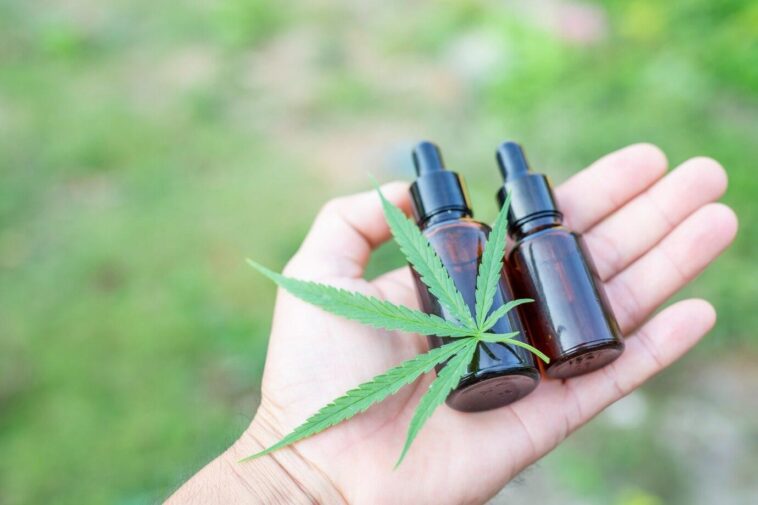Key Takeaways:
- Understanding the basics of medical cannabis access and its legal landscape.
- Identifying the therapeutic potential and uses of medical cannabis.
- Steps to legally obtain medical cannabis in regions where it is permitted.
- Considering patient care and physician guidance in the medical cannabis journey.
In recent years, there has been a notable shift in how medical cannabis is viewed and accepted as an alternative treatment for various health conditions. As more states and countries legalize the use of cannabis for medicinal purposes, the healthcare industry is increasingly prioritizing patient care and access to medical cannabis as a means of promoting wellness.
The Broad Spectrum of Cannabis Therapeutics

The landscape of medical cannabis is as varied as it is promising, offering a spectrum of therapeutic options for patients facing various health challenges. Central to the appeal of cannabis as a medicinal agent is its diverse array of cannabinoids, most notably THC and CBD.
The body’s endocannabinoid system, a network of receptors that control various physiological functions, is impacted by these substances. By engaging this system, medical cannabis holds the potential to ease conditions ranging from chronic pain and severe epilepsy to the adverse effects of chemotherapy.
Accessing the breadth of possibilities commences with obtaining a Texas medical marijuana card or an equivalent document in other states, providing a legal entry point into the world of medical cannabis for those who stand to benefit from its use.
Regulatory Framework of Medical Cannabis
Despite the acknowledged therapeutic benefits, the journey to accessing medical cannabis begins with a labyrinth of legal considerations. In many places, regulatory frameworks have been established to oversee the use of cannabis for medical purposes, each with its own set of rules and restrictions.
In the United States, at the federal level, cannabis remains classified as an illegal substance, leading to discrepancies between national and state laws. However, a growing number of states have carved out exceptions for medicinal use, mandating a highly regulated environment where qualifying patients can lawfully obtain cannabis.
Patients typically have to navigate a series of legal prerequisites, including obtaining a recommendation from a licensed physician, applying for a medical cannabis card, and purchasing products from approved dispensaries.
Navigating the Process for Legal Access

For patients, obtaining legal access to medical cannabis involves a procedural journey that starts with their healthcare provider. A confirmed diagnosis that falls under the qualifying conditions for medical cannabis use is often the first requirement.
Following this, a thorough evaluation from a physician who can attest to the suitability of cannabis as a treatment becomes essential. Some states have streamlined this phase by partnering with specialized medical services that focus on assisting patients through the application and medical assessment processes.
These services operate within the legal framework to enable patients to access medical cannabis for therapeutic purposes. Moreover, some platforms provide extensive resources and step-by-step guides for patients across the United States looking to navigate the medical cannabis landscape.
Discussing Patient Care and Medical Cannabis
Once access is acquired, the focus shifts toward patient care within the context of medical cannabis use. When adding cannabis or any other new medicinal substance to a patient’s regimen, dose, delivery routes, and possible drug interactions must all be carefully considered.
In this respect, educating patients and healthcare providers is critical. It is necessary to establish a well-grounded understanding of cannabis-derived products, their effects, and how they can be effectively incorporated into health management strategies.
This aspect of care is essential, as misadministration or inadequate understanding can lead to suboptimal results or adverse outcomes. The aim is to create a safe and informed pathway for patients, ensuring that their journey with medical cannabis is marked by support, clarity, and well-being.
The Critical Role of Healthcare Providers

Integral to the process are the healthcare providers, whose role goes beyond the initial recommendation required for patients to access cannabis. Doctors, nurses, and other medical practitioners provide ongoing support and guidance, adapting treatment plans as needed and helping patients understand the nuances of cannabis as a medicinal product.
Healthcare providers are responsible for keeping abreast of the latest research and clinical guidelines and applying this knowledge to the direct benefit of their patients. As the scientific community’s understanding of medical cannabis deepens, so too must the knowledge base of those tasked with prescribing and overseeing its use in a clinical setting.
Patient Success Stories and Cannabis Treatment
Amidst the clinical studies and regulatory frameworks, the stories of individuals who have experienced significant relief from their symptoms are particularly compelling. Anecdotes from patients serve as powerful testimonials of the potential benefits of medical cannabis.
These personal experiences can resonate with others considering this treatment and offer a semblance of hope. While not a substitute for empirical evidence, success stories do provide a human dimension to the data, emphasizing the quality of life improvements that some patients attribute to their use of medical cannabis.
However, it is crucial to approach these accounts with a critical eye, acknowledging that individual experiences can vary as widely as the strains of cannabis and their applications in treatment.
Emerging Research and Future Outlook

As the body of knowledge expands, the outlook on medical cannabis continues to evolve. A burgeoning field of research aims to unravel the complexities of cannabis and its multitude of constituents, striving to determine the specific contexts in which it can serve as an effective and safe therapeutic option.
Such studies are paramount in fostering a more nuanced understanding of cannabis and its place within modern medicine. They contribute to clinical practice and inform legislative efforts, making a case for necessary reforms in patient access and care. Ultimately, the interplay of science, policy, and patient advocacy is driving the journey toward an era where medical cannabis may be as commonplace in treatment plans as traditional pharmaceuticals.
Conclusion
The journey to wellness with medical cannabis is a dynamic and evolving process that requires collaboration, education, and patient-centered care. As legalization expands and access improves, patients have more significant opportunities to explore the therapeutic benefits of medical cannabis and enhance their quality of life.
By prioritizing patient needs, fostering open communication, and advocating for continued progress, we can ensure that medical cannabis remains a valuable tool in promoting health and wellness for individuals worldwide.




